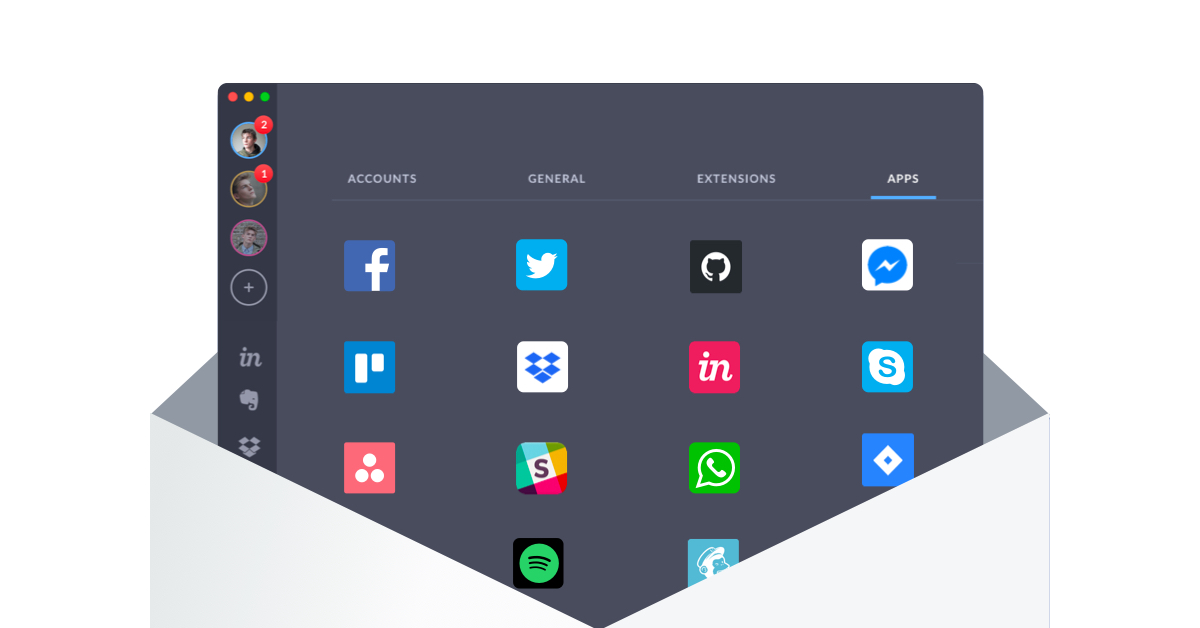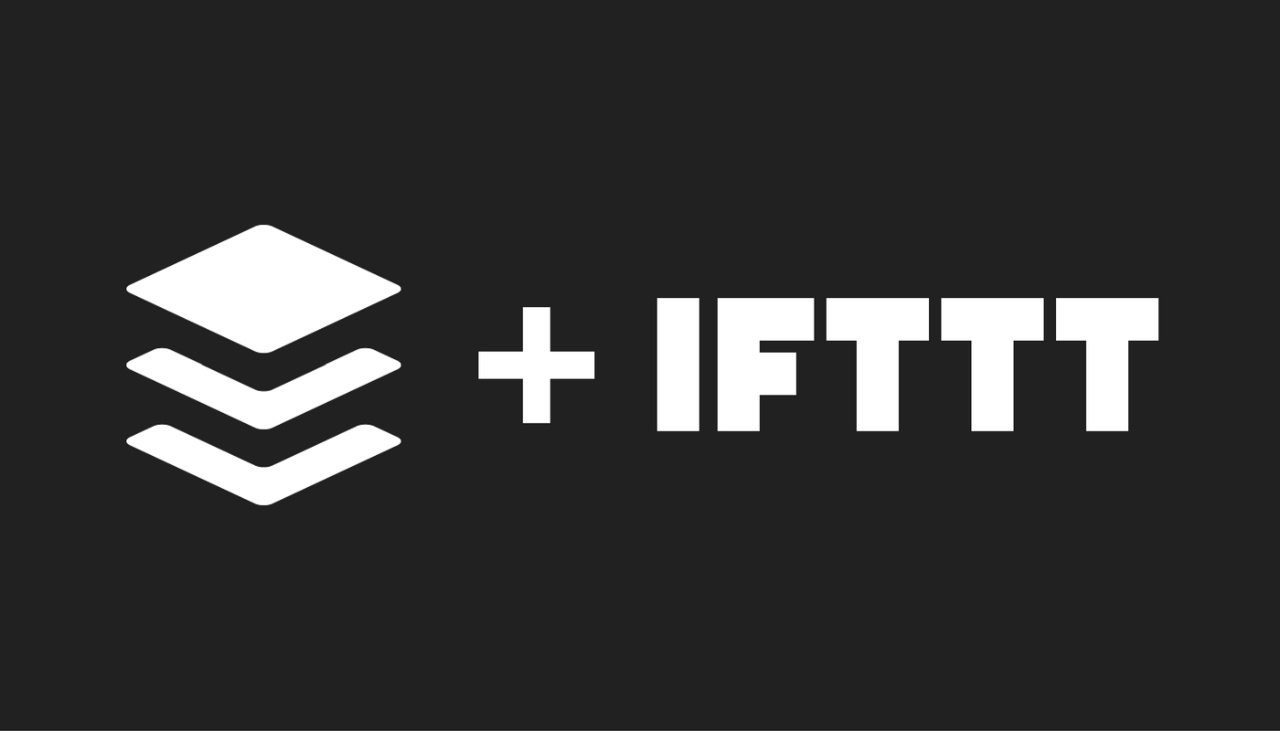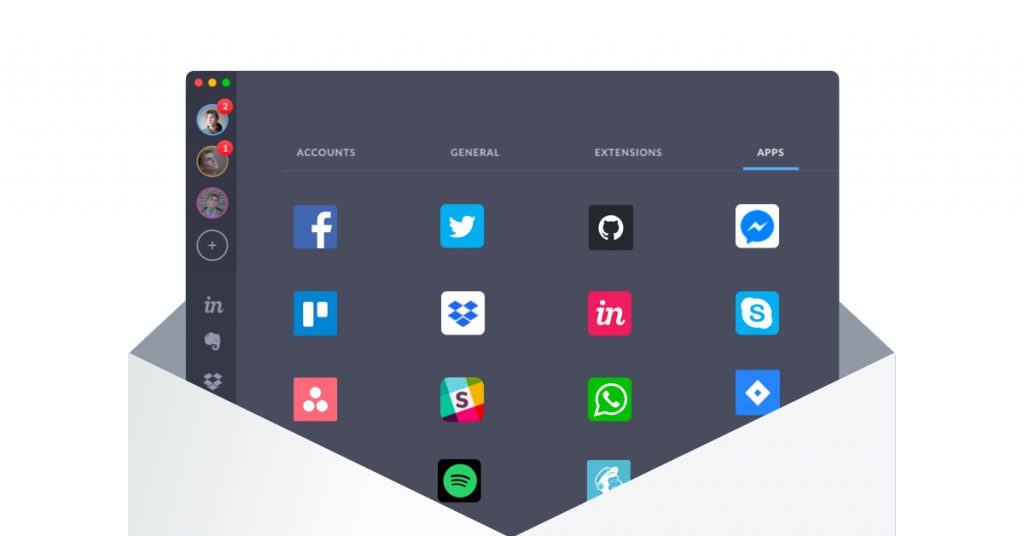It’s better to think about productivity in terms of investments.
Like investments, the ‘best’ productivity tool for you is subjective. It will not be the most widely-used one, or the highest-ranked, or the most expensive one. Instead, it’s the one that is best suited to your situation, and the one that fits best into your working style.
Much like investments too, you’ll need to pay upfront – in terms of time spent configuring, setting up and learning how to use, and getting the most out of it – before the payoff happens long-term. It may take a while, but investing in productivity can definitely help you get more done faster.
Here are three ways for you to invest in productivity to help you get more done, faster:
Invest In A Workflow/App Manager for Better Focus on Tasks
These days, businesses have shifted to using multiple tools, services and integrations to function. Even offline businesses like cafes rely on a combination of Point-of-Sales ordering systems, digital loyalty programs and social media management apps for digital marketing.
With all these moving parts, it can be difficult to keep everything configured and synced up. That’s why workflow apps and App Managers are important, to manage the multiple streams of data and functionality that the different apps and services provide.
For example, social media management apps like Buffer and Hootsuite began on a single social media platform, and slowly expanded to offer management of multiple social accounts like Instagram, Facebook, Twitter, LinkedIn and so on. The best workflow tools today are those that integrate with external services and offer broad options.
Another option is an all-in-one app manager like Shift, which streamlines and syncs across multiple different apps like Slack, Trello, Jira, as well as the Google suite: Mail, Calendar, and Drive. By gathering the account credentials and functionality of multiple apps in one location, app managers like Shift reduce the complexity of dealing with multiple account logins and passwords.
App Managers like Shift act like a control panel for more effective workflow
App managers also reduce the switching costs; the momentary loss of focus and energy when changing between different tasks or apps. It can be distracting when writing code or editing videos to suddenly switch to responding to emails or managing file names – especially if passwords are involved.
Picking the Right App Manager: What to look out for
- The Right Selection of Apps: Most app managers will have an Apps & Integrations page; make sure the App Manager has all of the important apps you’re likely to use day-to-day. The App Manager should serve your needs directly; doesn’t matter if they have the most apps if you don’t use any of them.
- Regular Releases & Updates: Each of the integrations will need to be continually updated and maintained, so pick an App Manager that shows regular releases so the integrations don’t break.
- Take the demo / Run the Trial: Most app managers offer a free trial or a video demo of the UI, so take it for a test run. At this stage, functions and switching will be slow, but speed will come with regular use every day. Instead, make sure the App’s functions run smoothly and are useful.
Build a Referral Program for Compound Interest on Marketing
Investors dream of passive income — making investments which bring in dollar and cents on their own, without active management, even while they sleep. Just by setting and forgetting, these investments bring in value over time, which accumulate even more value and can expand the size of the original investment. The more investments you have, the more interest you earn, which can pay for more investments and so on. Referral programs fit the role of compound interest in marketing, helping increase the value of your other customer acquisition channels.
Digital marketing relies on experimentation across multiple channels to find an effective means of customer acquisition, followed by scaling to increase the output of the channel. Referrals work by incentivizing existing customers to refer new customers and are driven based on the number of customers you have. If social ads drive 1,000 customers a month, that number rises to 1,050 with a 5% referral rate program – and each of those 50 new customers from referrals become advocates who may bring in more customers.

Referral programs like ReferralCandy amplify the effect of other marketing channels
In this fashion, referral programs serve as a force multiplier effect, improving the effectiveness of each other form of marketing. The referral program can serve as an engine for viral growth too, with luxury watch brand Daniel Wellington relying largely on social influencers to build word-of-mouth and drive referral sales. Super-users like Kendall Jenner or Selena Gomez could bring in plenty of users by themselves – but of course, such a campaign requires plenty of press and brand management and targeted outreach, and an active investment of time.
Instead, you can make use of referral software that helps you set up a referral program easily. Once you set up your referral incentives, emails, and landing pages, such programs can run by themselves. Ensure that customers receive prompts to share the referral program, make sure that sharing is easy, and you can set and forget the referral program and watch the compounding growth of your other marketing channels.
Picking the Referral Program: What to look out for
- Ease of Use / Number of Features: The right app depends on the level of resources and time available to you. Apps out there run the gamut from a streamlined referral program to a full-fledged loyalty rewards program with memberships and point tiers. Make sure you’re not paying for features you won’t be using.
- Look for Customisation and Branding: Retail eCommerce sales in the United States alone is expected to grow by 40% by 2022 to US$ 638 billion. With so many brands entering the market, it’s important that your referral program allows you to put your brand and visual look on the emails, landing pages and aspects of the referral program.
- Count the Pennies: It’s worth doing a bit of math to forecast the expected costs of the program. Some apps charge per referral sale transacted, meaning you’ll only be charged when the sale is made. Others may charge based on the number of emails sent out, or the number of advocates enrolled. The right referral program should (more than!) pay for itself, rather than cost more and more to run.
Spend on Technology to Automate Actions
Another approach to improving productivity is to eliminate actions which do not scale. This can include repetitive, regular actions, like gathering stats for a report or cross-posting social media messages to all platforms. These are tasks of relatively low complexity and effort, but which nevertheless take up vital mental energy and effort to complete. Instead, incorporating marketing automation in your routine can help free you up for greater productivity.
Buffer and IFTTT are two great examples of marketing automation, specifically for social media management. Buffer allows you to prepare a schedule of pre-formatted social media posts at the scheduled time and date; instead of writing a post each day, you can prepare a batch in advance and leave it to run in the background. IFTTT allows you to build simple functions with a trigger and an action, allowing for automation like, “Tweet when Blog RSS Feed Updates or Post hashtagged Instagram photos to Facebook.”

Buffer & IFTTT offer simple marketing automation that eliminate repetitive menial tasks and actions
Marketing automation are great for tasks and actions that scale, like CRM and Marketing. It would be impossible for an eCommerce or B2C company to send every new customer a welcome email or an email on their birthday, but with marketing automation, the focus can be on optimizing the effectiveness of each email. This could extend to many actions inside the Customer Relationship space, including requesting a review, prompting social sharing, and surveying Net Promoter Score.
“Anything you do more than twice should be automated.” – Adam Stone, D-Tools CEO
Picking the Right Automation: What to look out for
- Scope the desired features: In an ideal world, your marketing automation encompasses every action and every integration; of course, that’s not possible. Instead, you may need to prioritize one aspect (for example, CRM and email automation) or combine a variety of automation functions.
- Reliability and Uptime: Reliability is key; if automation fails, you don’t want to have to send thousands of emails manually instead. Plus, if the automation requires integrations (like with social media platforms) a regular update schedule is important to avoid your automation breaking with each update.
In Conclusion: Investing in Productivity is Important
High Growth Teams have no time to waste. Investing in productivity pays off in the long run, in terms of increasing output, decreasing effort and freeing up time which can be better spent elsewhere These three techniques — reducing switching costs, improving marketing efficiency, automating simple tasks — can be supported ably by apps, and lead you to see higher productivity gains overall.
Ten articles before and after
Use Gmail Filters to Declutter Your Inbox
Delegate Your Contacts in Google Contacts Manager
Hangouts Archive Vs Delete: What's the Difference?
The Ultimate Guide to Slack Channels
The PDF Tool to Save You From Headaches
The Ultimate Guide to Staying Productive Over The Holidays
Apps to Help You Finish Christmas Shopping Early
The Multitasking Myth: How To Truly Increase Productivity
